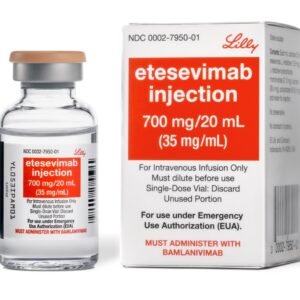Mexiletine Hydrochloride Tablets
Effects and efficacy:
Generally used to treat acute and chronic ventricular arrhythmias.
Usage and dosage:
The initial oral dose for adults is 400 mg, and 200~250 mg is continued after 2 hours, 3~4 times/day, once every 6~8 hours. A higher loading dose (600 mg) can also be given, which is necessary to overcome delayed absorption after myocardial infarction, especially when the patient has received opioid analgesics. The commonly used maintenance dose is 600~900 mg/day, given in divided doses. Individual maintenance doses can also be increased to 1200 mg/day, taken orally in divided doses. Oral administration should be given during meals and swallowed with a large amount of liquid to avoid the formation of esophageal ulcers. Modified release preparations have begun to be used. For intravenous injection and intravenous drip, 100~250mg can be used, slowly pushed at a rate of 25mg/min, followed by dripping 250mg (diluted with 5% glucose injection) within 1 hour, and then dripping 250mg within 2 hours, and then dripping at a rate of 0.5mg/min. The drip rate is adjusted according to the patient’s response. When appropriate, it is converted to oral administration, 200~250mg once, 3 times/day. An alternative method is to start with an intravenous injection of 200mg at a rate of 25mg/min, followed by oral administration of 400mg at the end of the intravenous injection, and then the same oral method is used. Children take 3~5mg/kg orally once, 3~4 times a day, and the dose can be reduced after stabilization. Intravenous injection starts with 2~3mg/kg, add 20ml of 5% glucose injection, and inject slowly; if it is ineffective, it can be used again after half an hour; the maintenance dose is 0.75~1mg/min. Patients with renal impairment For patients with chronic renal impairment, when the creatinine clearance rate is greater than 10ml/min, the pharmacokinetics of mexiletine do not change significantly, so these patients can be given a normal dose. However, when the creatinine clearance rate is lower than 10 ml/min, the plasma steady-state concentration increases and the half-life is prolonged. The dose of mexiletine needs to be adjusted according to the plasma concentration. Continuous peritoneal dialysis in patients with chronic renal injury does not affect the clearance of mexiletine. New clinical use: For the treatment of diabetic neuropathy, 100 mg, 3 times/day. If the effect is not obvious, it can be gradually increased to 600 mg once, and a course of treatment is 4 weeks. Or use 300 mg of this product, 2 times/day, after meals, and reduce the dose to 100 mg 3 times/day after 1 week, and maintain for 4 to 5 weeks.
Adverse reactions:
About 20%-30% of patients experience adverse reactions when taken orally. Adverse reactions are more likely to occur with intravenous medication. Due to the narrow therapeutic window of this product, it is easy to cause adverse reactions due to slightly larger doses and/or slightly faster injection speeds, which are sometimes so severe that the drug must be discontinued and given appropriate treatment. Gastrointestinal system: The most common adverse reactions include nausea, vomiting, etc., and there are reports of abnormal liver function, including increased AST. Nervous system: The second most common adverse reaction, including dizziness, tremor (first appearing hand tremor), ataxia, nystagmus, coma and convulsions, diplopia, blurred vision, mental disorder, insomnia. Cardiovascular system: Sinus bradycardia and sinus arrest are generally rare, chest pain may occur occasionally, proarrhythmic effects such as ventricular tachycardia, hypotension and heart failure furniture. Treatment includes discontinuation of medication, use of atropine, pressor drugs, pacemaker. Allergic reaction: rash. Very few cases have leukopenia and thrombocytopenia. Stevens-Johnson syndrome occasionally occurs.
Drug contraindications:
Contraindicated if allergic to this product. Use with caution during pregnancy. Use with caution during lactation. Use with caution in case of liver function impairment. Use with caution in case of kidney function impairment.
Share:
Products
Our offers
Health Classification
Let us work together to protect precious health



























